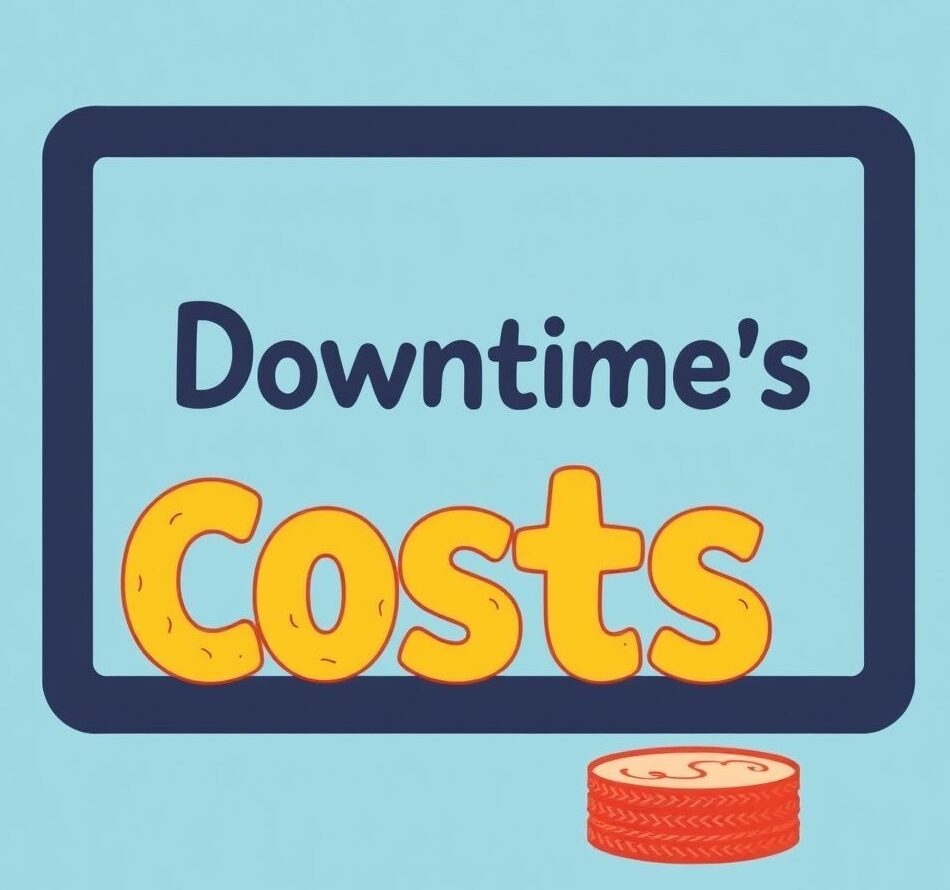In today’s rapidly changing digital landscape, the importance of service reliability and security is like a sturdy anchor in a turbulent sea; it cannot be ignored. Downtime, whether planned or sudden, can cause severe financial damage, harm to a brand’s reputation, and a decrease in user trust. As our dependence on technology grows, comprehending the hidden costs tied to downtime is crucial for businesses, regardless of size. In this blog post, we will delve into the different dimensions of downtime, exploring its causes, effects on businesses, and strategies for mitigating these risks.
This analysis aims to shed light on how downtime influences revenue, customer satisfaction, and operational efficiency. By the conclusion of this article, you will possess a thorough understanding of why investing in dependable and secure systems is vital for long-term success.
The Nature of Downtime
Downtime is akin to a bridge being out when you’re in a hurry; it refers to the periods when a service is unavailable or inaccessible to users. This can happen due to technical failures, maintenance work, or unforeseen events like cyberattacks. Recognizing the different types of downtime—scheduled, unscheduled, and partial—is vital for devising effective strategies. Each type presents its own set of challenges and repercussions.
Quantifying the Financial Impact
The financial ramifications of downtime can be enormous, much like a waterfall that cascades faster than expected. A study conducted by Gartner reveals that the average cost of IT downtime is about $5,600 per minute. This figure can skyrocket based on the size and scale of the business. For example, a retail company that deals with millions in transactions might face losses surpassing $1 million after just a few hours of downtime. Companies need to factor in not only the direct revenue losses but also the indirect costs related to customer dissatisfaction and the erosion of their competitive edge.
Impact on Customer Satisfaction
Customer experience is crucial for retaining a loyal customer base, much like a gardener tending to flowers for them to flourish. Downtime can drastically affect user experience, causing frustration and leading to service abandonment. According to a report by Forrester, 86% of consumers are willing to pay extra for superior customer experiences. Consequently, ongoing downtime can correlate directly with customer churn and reduced revenue, making it essential for businesses to understand this relationship to thrive in competitive environments.
Effects on Employee Productivity
Beyond the impact on customers, downtime also affects employee productivity, much like a broken clock that can’t keep time. When systems fail, employees find it challenging to perform their tasks, leading to delayed projects and lost productivity. Research by the Ponemon Institute shows that lost productivity can constitute a significant portion of downtime costs. Training programs and cross-functional collaboration can help mitigate these effects, ensuring employees are well-prepared to handle outages effectively.
The Role of Cybersecurity in Downtime
As cyber threats become increasingly sophisticated, the role of cybersecurity in preventing downtime is vital. Cyberattacks can result in prolonged downtimes, as systems may need considerable recovery efforts. Businesses must invest in robust cybersecurity measures to prevent breaches and subsequent system failures. With the average cost of a data breach reaching $3.86 million, organizations are prompted to reevaluate their security investments.
Best Practices for Downtime Mitigation
To lessen downtime, businesses should take a comprehensive approach. This could involve implementing redundancy systems, conducting regular maintenance audits, and establishing effective incident response plans. Many organizations also turn to cloud-based solutions to enhance scalability and reliability. Transitioning to cloud services can minimize the risk of hardware failures and improve overall service delivery.
Investing in Reliable Solutions
Ultimately, investing in reliable and secure solutions is the best defense against the costs associated with downtime, similar to laying the foundation of a robust building. This entails regular monitoring, proactive maintenance strategies, and ongoing employee training. A commitment to quality IT infrastructure can result in substantial long-term benefits, creating a resilient business that can navigate challenges.
Conclusion
Understanding the hidden costs of downtime is crucial for businesses looking to uphold operational efficiency and customer satisfaction. As we’ve discussed, the immediate and lingering consequences can significantly influence a company’s financial situation. By investing in solid systems and proactive strategies, businesses can minimize downtime, boost reliability, and secure their position in the competitive market.
In summary, the implications of downtime reach far beyond immediate financial loss; they touch every aspect of a business’s operations. A comprehensive approach to managing downtime not only safeguards revenue but also builds customer trust and enhances employee satisfaction, clearing the path for future success.
